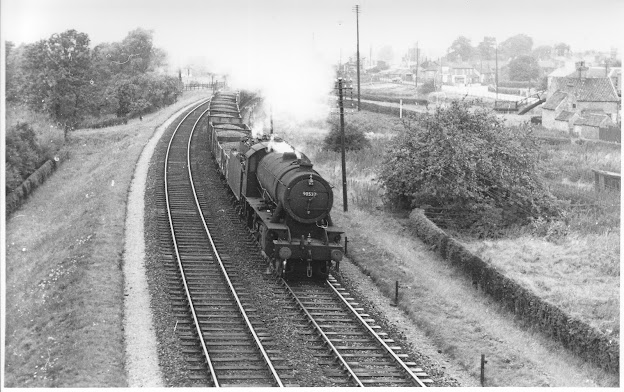Saxilby Waterfront - the complicated history of who owns what on our canal side.
As you read in my article last month, Saxilby Moorings has seen constant development over the centuries.
Following Richard Ellison of Thorne's renovation of the waterway in 1740, a turnpike road from Lincoln to Dunham and Worksop was
opened in 1756. A wooden drawbridge was constructed over the canal, replaced by a swing bridge in 1823.
Skellingthorpe Road was immediately behind the bridge
keepers house (pictured above) running alongside the canal to the Lindsey
and Kesteven Chemical Works (now the Riverside Enterprise Park).
By the early 20th century, the roads had become the responsibility of the County Council, and by the 1930s, there was an urgent need to replace the swing bridge.
It was announced in 1935 that Lindsey County Council would begin work on the building of new bridges over the Fossdyke and railway for £47,000. The artist's drawing is shown below.
The work was expected to take two years and find employment
for over 100.
The Lincolnshire Echo reported that it was 16 years
since the first move was made by the County Council to improve the dangerous
and troublesome swing bridge and level crossing in the village.
The bridges were opened on a very wet day in September 1937
by Lord Heneage, Chairman of the County Council.
Both the area of land between the footbridge and the
railway line and the pathway between the footbridge and the steps leading to
the A57 are still lined by hawthorn hedges that once bordered the roads. These
areas are still owned by the County Council, although the flood bank now built on
top of the old Skellingthorpe Road is the responsibility of the Environment
Agency.
Bridge Street and the moorings were designated a
conservation area in 1989A section within the conservation area report states
that ‘much of the rest of the land to the south side [of the canal] was
once farmed, and after the railway line was built [in 1848] was largely
used as allotments.
 |
| The allotments and Bridge Keeper's Cottage |
Its last use was by the British Waterways Board for the
dumping of dredging spoil, but its future as a nature reserve now seems
secure’.
The allotments were sold by auction to a private buyer some
20 years ago by British Rail.
Finally,
over 30 years since the report, has the vision of a nature reserve on this site
come to fruition.
The Parish Council has reached an agreement with the
landowners to create ‘Saxilby Community Wood’; the project is led by Ross and
Eleanor Smith of Saxilby Nature Project.
To date, junk has been removed from the woodland pool, a
new path added to the existing ones, and information boards installed at the
entrances.
Ivy will be cut back soon to stop it from smothering the
ancient hawthorn and new trees planted.
Trees were planted on the roadside verges running along
Bridge Street to commemorate the Coronation of Queen Elizabeth II in 1953; the County Council own the verges.
The concrete floodwall was built in 1963 to prevent flooding
which had occurred during the 1940s and ‘50s, and which at times reached as far
as the Village Hall.
As can be seen in the photograph below taken in November 2000, without the flood wall, the narrow boats would have been moored on Bridge Street!
Other features of the moorings are the footbridge and pipe
bridge.
The
pipe bridge carries Lincoln’s water supply from boreholes at Elkesley to
Westgate water tower and is owned by Anglian Water.
Following a typhoid epidemic in 1904/5, the pipeline was
constructed in 1910. The pipes cross the Trent on a special six-span steel
bridge by the side of Dunham Bridge, and over the Fossdyke in Saxilby. The
bridge was designed to allow the passage of working boats.
The footbridge, owned by West Lindsey District Council, was lifted into place on Sunday 22 November 1987. It was first constructed in 1883 by the Great Northern Railway over the East Coast Main Line at Newark. It was moved to Claypole, four miles south of Newark about 1938, where it remained until June 1987, when its removal was required because of British Rail's electrification programme.
A street gala was held to mark the opening by Councillor Maurice French in March 1988.
Chris Hewis




.jpg)



Comments
Post a Comment